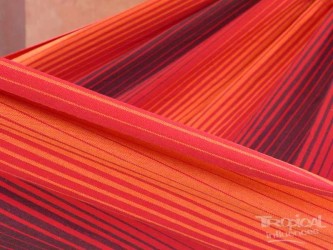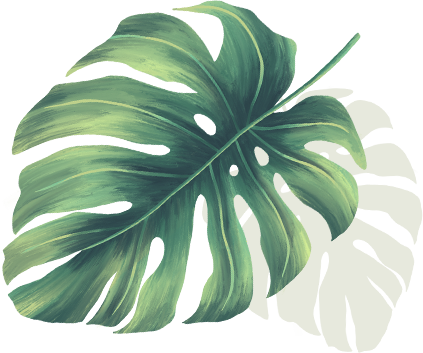










Including €0.13 for ecotax
Reference: HAMACbarbacoaXXL
The Mariposa XXL hammock is incredibly sturdy. Let all your little ones climb in and join them too! New this year with an original color combination of orange, red, and brown. A very warm ensemble, like the embers of a barbacoa (barbecue)!
The Mariposa XXL hammock is incredibly sturdy. Let all your little ones climb in and join them too! New this year with an original color combination of orange, red, and brown. A very warm ensemble, like the embers of a barbacoa (barbecue)!
Let's recall some basic rules here: Since you settle diagonally in a hammock, the taller you are, the wider your hammock needs to be. It is the length of the fabric that will allow the possibility to lie down as a couple. For more information, please consult: How to choose a hammock.
"Ecotec" recycled cotton is a highly ecological material. It is made from clean scraps from various textile industries (mainly clothing), then sorted by color before being recycled and spun again. Because it is sorted by color, it is neither bleached with chlorine (necessary before any cotton dyeing) nor dyed with chemical products.
Here is the calculation of the ecological impact YOU will make with the purchase of this hammock:
Knowing that the hammock fabric uses 1 kg of recycled cotton, the generated impact is:
Regarding cotton cultivation (one of the most widespread and harmful crops for the environment), here is what is needed to obtain 1 kg of raw cotton:
- 12.5 m² of cultivated land.
- 10,500 liters of water.
- 1.55 kg of pesticides.
Regarding cotton dyeing. When cotton is harvested, it must be cleaned, bleached, and finally dyed. Here is what is needed to obtain 1 kg of dyed cotton:
- 30 grams of bleach (Chlorine or hydrogen peroxide)
- 120 liters of water (20l for bleaching, 80l for dyeing, 10l for fixing agent, and 10l for softener). The 80l for dyeing are heated to about 90°C depending on the colors.
- In more or less small quantities, the following chemicals: industrial dye and fixer, softener, color regulator, sodium carbonate, and detergents.
The only downside of recycled cotton is that the thread gains its strength thanks to a polyester filament (which represents 20% of the total weight) that runs through the thread to be woven on powerful machines that weave tight meshes and heavy weights per m². Petroleum-based polyester is not considered an ecological product, yet it is very durable. What is not ecological is our behavior. Indeed, it is so economical that we neglect it by consuming too much (packaging, bags) and by throwing it away too easily. But that is another debate….
The "Ecotec" recycled cotton of each of our hammocks therefore represents a small gesture for the planet, but if millions of us do it, we will maintain it as it should be.
Tropical greetings.
The Tropical Influences team.
The 6 essential tips to know to make the best use of your hammock:
Data sheet
